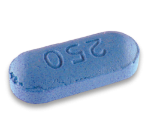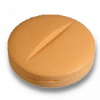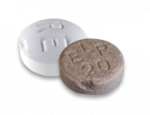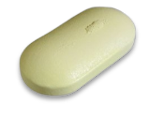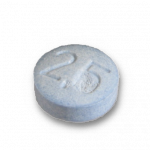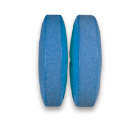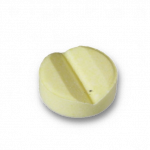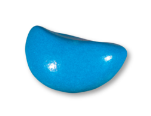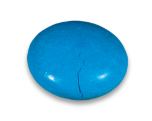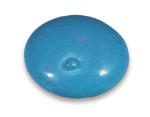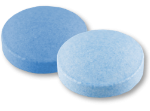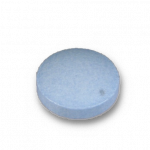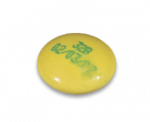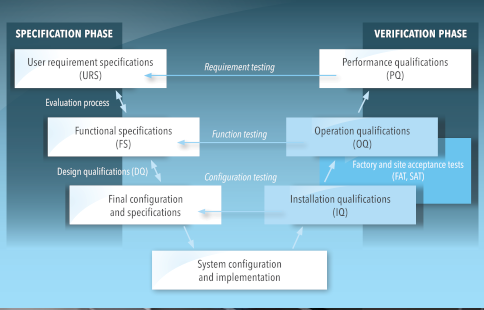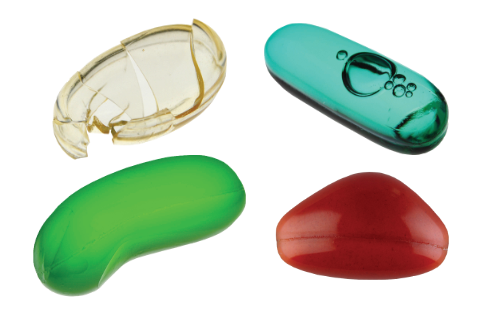Tablets are the most widespread form of oral medication. Despite the fact that in recent years we have seen important improvements in both tablet production machinery and quality control systems, the modern tablet production process still has some challenges to overcome for providing perfect tablets, without defects
A tablet can be imperfect in a number of ways and these defects and imperfections can either be found on the surface or in the interior layers of the product due to the formulation problems. In this tablet defect overview, we are focusing on the most common visible defects that can be discovered during the quality control, because an imperfect appearance of a single tablet in a package can raise serious doubts about integrity and quality of the product. Consequently, pharmaceutical companies continuously try to increase their efforts to assure high-quality of their products. Visual quality control can be done by various statistical schemes or by 100% visual inspection and sorting, either manual or automated. Due to the fact that statistical sampling schemes, that estimate the overall quality of a given batch of tablets at a certain confidence level, cannot assure the required quality of each tablet, they are being replaced by 100% visual inspection and sorting. Since manual visual inspection of large tablet batches is subjective, unreliable, slow, tedious and costly, automated visual tablet inspection systems are more and more commonly used. Read here about the risks of manual inspection and find here how precise and unbiased a machine vision system can be compared to a human eye for quality control.
In Sensum we’ve been helping our clients all around the globe for more than 20 years improving the quality of their products and processes with our automatic visual inspection machines that detect and exclude visually defect products before they get packed and shipped out to customers. Our product range includes capsule inspection dedicated STREAM, 360⁰ inspection system SPINE capable inspecting tablets, capsules and softgels or FIBO that has the same functionalities as SPINE with additional bottle filling capabilities. Find out more about our whole range of products here.
In our line of work, we daily see and test a wide range of visual defects on capsules, softgels and tablets. With the latter, we have prepared an overview of 13 most common groups of tablet defects and their causes. We classified the source of the defects into tableting or coating and also determined the reasons for occurrence of each defect type.
TABLETING PROCESS
|
DEFECTS |
PROCESS RELATED CAUSES |
FORMULATION RELATED CAUSES |
|
Capping |
Mainly problems related to poorly finished dies or shape of punches, i.e. deep concavity or bevelled-edge of the punch. Capping can also happen if the punch remains below the face of die during ejection. Other reasons may be in the incorrect adjustment of sweep-off blade or too high turret speed (too short dwell time). |
Large number of fines in the granulation or segregation during the pressing procedure. Low moisture content and insufficient amount or improper binding material. |
|
Lamination |
Rapid decompression and too high pressure force. Too high turret speed (too short dwell time). |
Large number of fines in the granulation or segregation during the pressing procedure. Low moisture content and insufficient amount or improper binding material. Rapid relaxation of the peripheral regions of the tablet due to lack of compactness of the material (on ejection from die). |
|
Chipping |
Reasons relating to the shape and condition of the die, for example worn die groove at compression point or barrelled die, and punch. The latter represents a problem if the edges are turned inward or the concavity is too deep to compress powder blend. |
Too wet material, insufficient amount of lubricant or inappropriate binder leading into sticking. Improper convexity of the tablet which results in chipping during coating, dedusting, handling etc. (procedures that follow the tableting). |
|
Binding
|
Poorly finished dies and rough dies due to abrasion and corrosion, undersized dies having too little clearance. Another reason can also be too much pressure in the tablet press. |
Reasons mainly relating to material properties of granules, as for example too high moisture, too coarse and too hard granules for the lubricant to be effective, abrasive material of the granules causing cutting into dies or granular material too warm thus sticking to the die. Insufficient and improper lubricant are also important factors. |
|
Picking
|
Free rotation of upper or lower punch during ejection of a tablet and rough or scratched punch faces. When embossing or engraving letters the latter can be problematic in case of B, A, O, R, P, Q and G. It can happen that the dividing lines on a punch are too deep or applied pressure is not high enough (soft tablet). |
Excessive moisture in granules, insufficient or improper lubrication and too high amount of binder. |
|
Thickness |
Punch tooling is of inconsistent length (between batches). Uncleaned and unmaintained tablet press. |
Granulation or powder blend is not adequately consistent in particle and distribution size (inconsistent filling of the die).
|
|
Dots/dirt
|
Contaminated material, e.g. punch lubricant (inadequate viscosity or used in excess) or scraped material from the bottom of the feeder. Scorched material from within the die bore or from the punch tips. Improper set-up or adjustment of the feeder causing too much overfill which is being returned to the feeder resulting in additional fines. |
Contaminated material/formulation during the processes prior tableting. |
|
Shape |
Too high press speeds and/or too short pre-compression. |
Tablets are either too soft or too damp. |
COATING PROCESS
|
DEFECTS |
PROCESS RELATED CAUSES |
FORMULATION RELATED CAUSES |
|
Cracking |
Improper coating process conditions that lead to core expansion and consequently cracking of coating (excesive heating effects, low pan speed, improper air temperature and spray rate etc.). |
Poor elasticity or lack of mechanical strength of coating to withstand the core expansion. |
|
Sticking/satellite |
Over wetting during the application of the coating. Spray rate too high, pan speed and process temperature too low, bad spray gun alignment. |
Coating formulation has low glass transition temperature, causing it to become sticky. Too low tablet cap curvature. |
|
Colour deviation |
Uniformity of coating distribution is inadequate (bad spray gun setup, inconsistent gun or bed distance, low pan speed etc.). |
Coverage properties of the coating are insufficient, solid content of the suspension is too high, weight gain or batch quantity is too low. |
|
Dark spots |
Long duration of the coating process which increases the chance of scuffing/abrasion of pan wall. Other reasons may also lay in low pan speed or underfilling which can cause the tablets to slide in the pan. |
Coating formulation contains a high concentration of materials (for example pigments like titanium dioxide) which are harder than the stainless-steel pan walls, causing an abrasion of the inox pan wall, resulting in the dark spots in the coating. |
|
Damaged print |
Incorrect alignment of the tablet with the punch, too much ink on the punch, improper ink viscosity and applying pressure, uneven flow of the ink, clogged ink jets etc. |
Improper formulation of the ink blends with a combination of coating ingredients. |
HAVING TROUBLE WITH DEFECTS ON TABLETS?
See below in video how our visual inspection systems can help you with that. Go to our PRODUCTS page to find out more about our SPINE solution or contact us on [email protected] to speak with our team of experts.
Sources:
– https://rheonics.com/solutions-item/pharmaceutical-printing-process-control/
– https://www.slideshare.net/grakbph040/defects-in-tablet-46026421
– https://uomustansiriyah.edu.iq/media/lectures/4/4_2017_12_04!08_08_36_AM.pdf
– https://www.biogrund.com/wp-content/uploads/2020/01/biogrund-troubleguide-a1poster-quer-11-2019.pdf
– http://filmcoating-troubleshooting.com/
– https://www.manufacturingchemist.com/news/article_page/Causes_and_solutions_for_dark_spots_in_tablet_manufacturing/159326
– https://www.researchgate.net/publication/277014530_Tablet_manufacturing_processs_and_defects_of_tablets
– G. Cole, J. Hogan, M. Aulton: Pharmaceutical Coating Technology, Taylor & Francis, 2002
